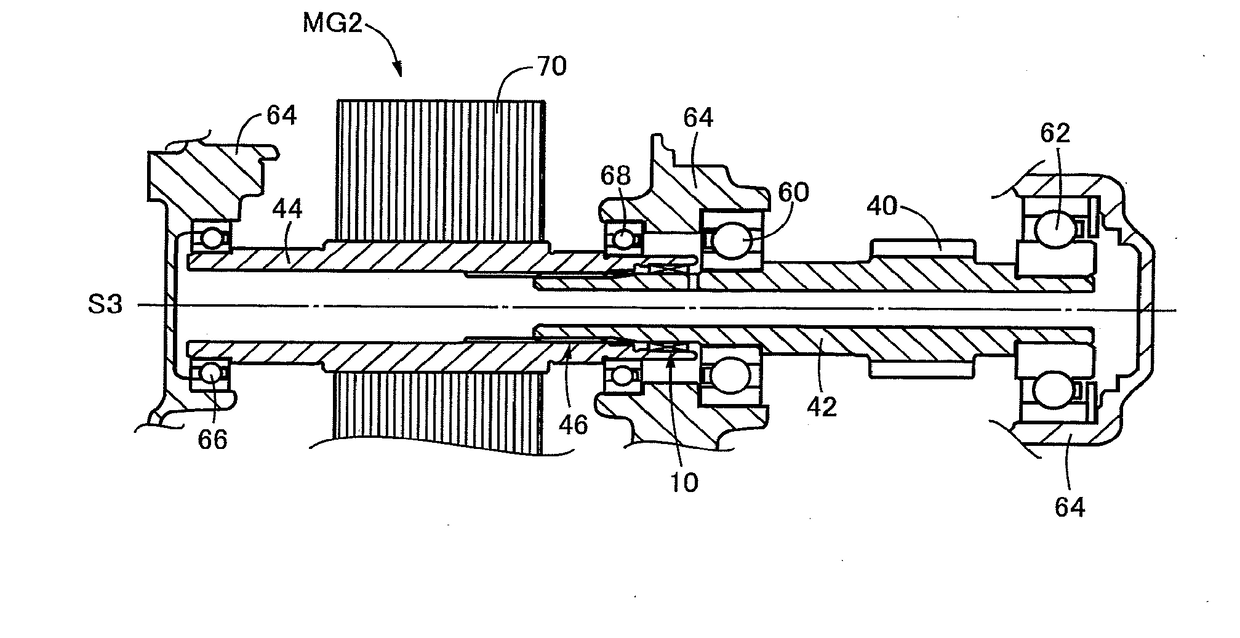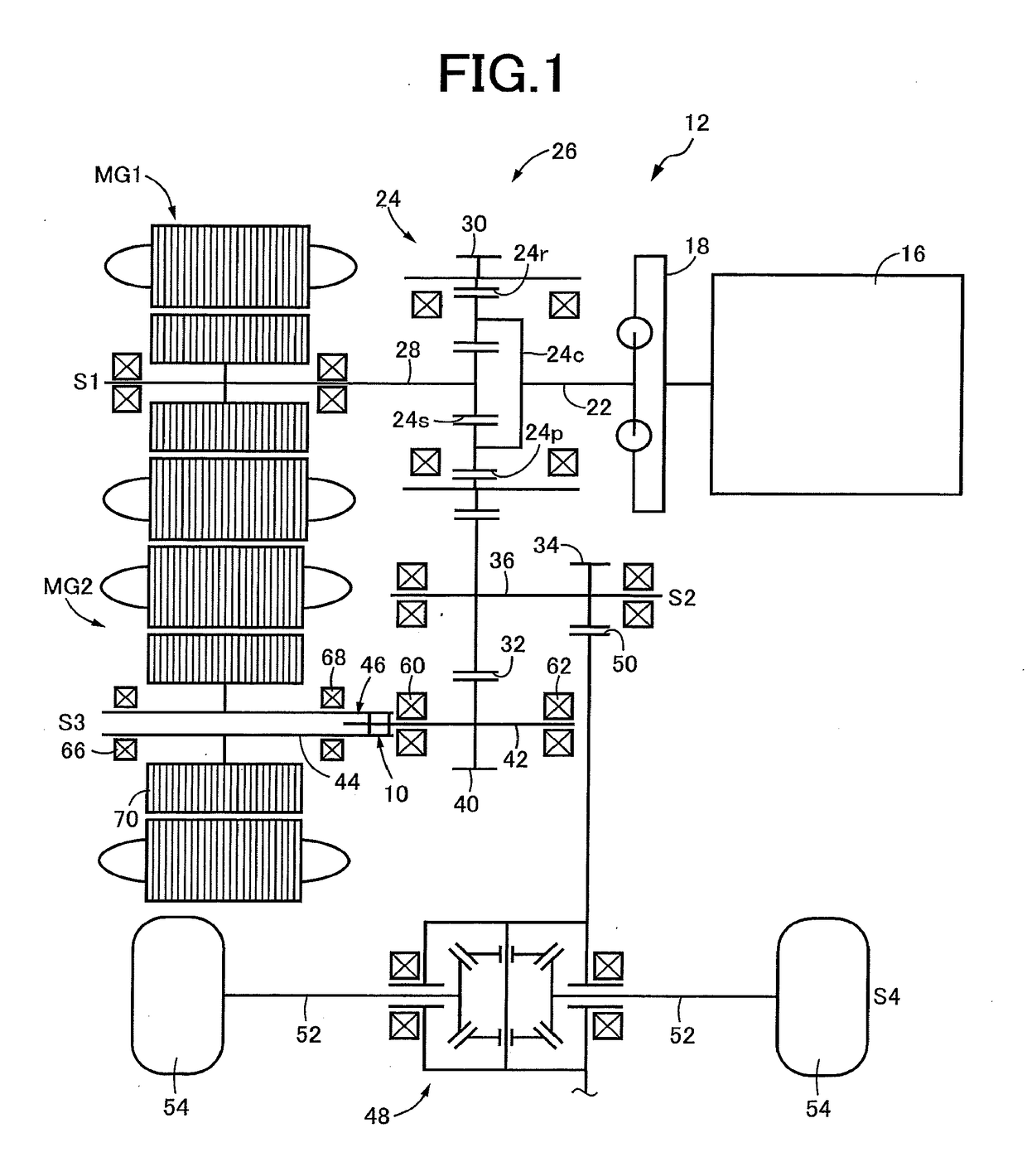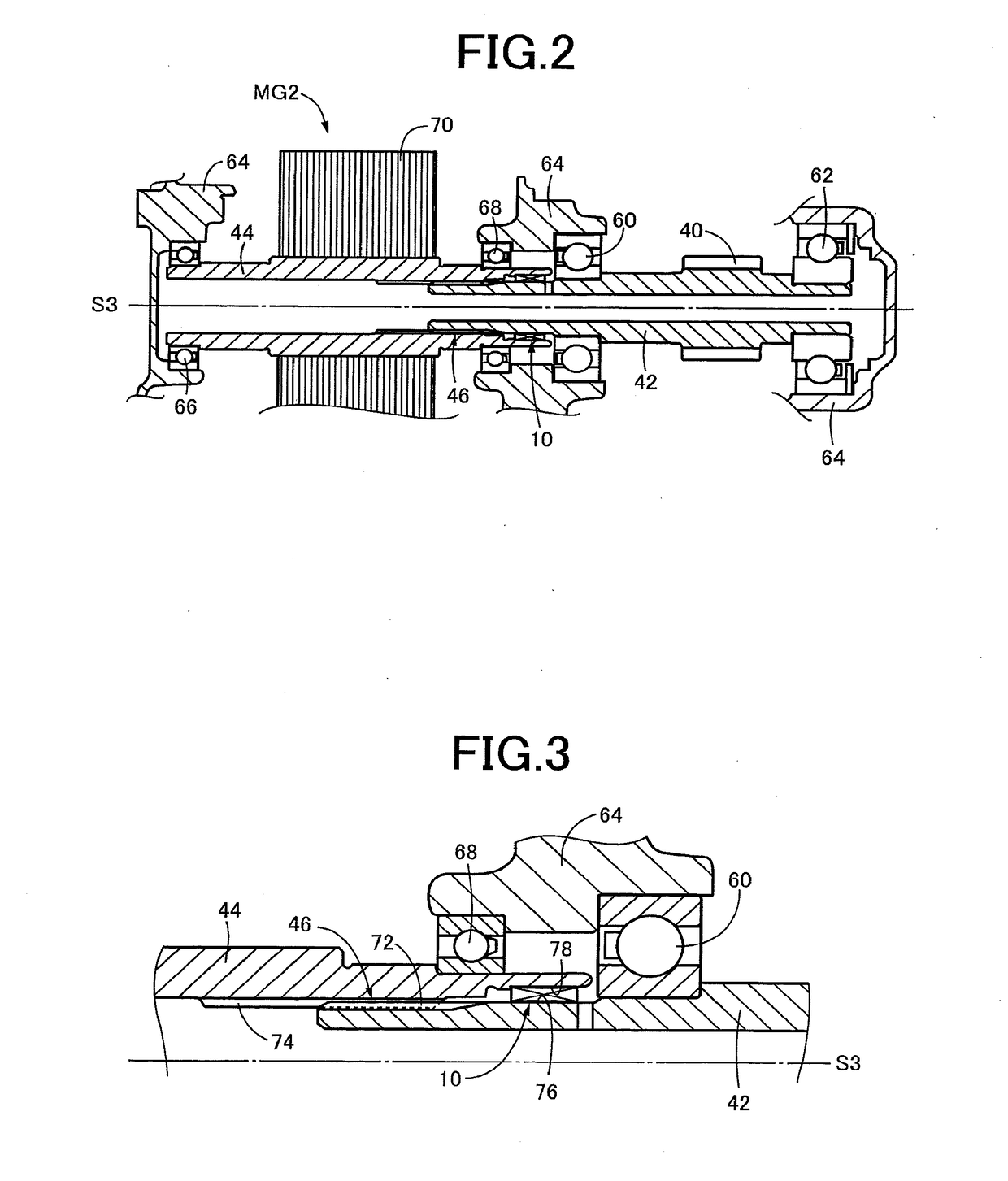Friction damper
a damper and friction technology, applied in the field of friction dampers, can solve the problems of increasing the rigidity of the elastic body, the risk of radial vibration of the inner and outer shafts, etc., and achieve the effects of reducing the risk of deterioration of the coaxial centering function, and increasing the rigidity of the area
- Summary
- Abstract
- Description
- Claims
- Application Information
AI Technical Summary
Benefits of technology
Problems solved by technology
Method used
Image
Examples
first embodiment
[0024]Reference is first made to FIG. 1, which is the schematic view showing a vehicular power transmitting system 12 provided with a friction damper 10 according to a first embodiment of this invention. This schematic view is a development view showing a plurality of axes S1-S4 of the power transmitting system 12 in the same plane. The power transmitting system 12 is a transaxle of a hybrid vehicle such as an FF vehicle of a transversely-mounted engine type wherein the axes S1-S4 extend in the transverse or width direction of the vehicle. On the first axis S1, there are disposed an engine 16, a damper device 18 and an input shaft 22 such that the input shaft 22 is connected to the engine 16 through the damper device 18. Coaxially with this first axis S1, there are disposed a planetary gear set 24 of a single-pinion type, and a first motor / generator MG1. The planetary gear set 24 and the first motor / generator MG1 cooperate to function as an electric differential portion 26. The plan...
second embodiment
[0039]In the first embodiment, the thick-walled section 86 is provided in a part of the axial length of the rear extending portion 82a of the rubber body 82. In a friction damper 100 according to the present second embodiment shown in FIG. 6, however, a thick-walled section 102 is provided in an entire axial length of the rear extending portion 82a. The thick-walled section 102 has a wall thickness larger than the wall thickness t2 of the constant-thickness section 88. It is noted that the wall thickness t2 of the front portion 82b may be changed within a range not larger than the smallest wall thickness of the thick-walled section 102.
third embodiment
[0040]In the friction damper 10 according to the first embodiment, the core member 80 is fixedly press-fitted in pressing contact with the outer circumferential surface 76 of the inner shaft in the form of the gear shaft 42. In a friction damper 110 according to the present third embodiment shown in FIG. 7, however, a core member 112 is fixedly press-fitted in pressing contact with the inner circumferential surface 78 of the outer shaft in the form of the rotor shaft 44. In this friction damper 110, the elastic body in the form of a rubber body 114 is bonded to the inner circumferential surface of the core member 112, unlike the rubber body 82 in the first embodiment. The rubber body 114 has an axial length L1 larger than an axial length L2 of the core member 112, and includes a rear extending portion 114a which extends in the rearward direction away from the rear end of the core member 112 as seen in the direction A in which the gear shaft 42 is moved relative to the rotor shaft 44...
PUM
 Login to View More
Login to View More Abstract
Description
Claims
Application Information
 Login to View More
Login to View More - R&D
- Intellectual Property
- Life Sciences
- Materials
- Tech Scout
- Unparalleled Data Quality
- Higher Quality Content
- 60% Fewer Hallucinations
Browse by: Latest US Patents, China's latest patents, Technical Efficacy Thesaurus, Application Domain, Technology Topic, Popular Technical Reports.
© 2025 PatSnap. All rights reserved.Legal|Privacy policy|Modern Slavery Act Transparency Statement|Sitemap|About US| Contact US: help@patsnap.com



